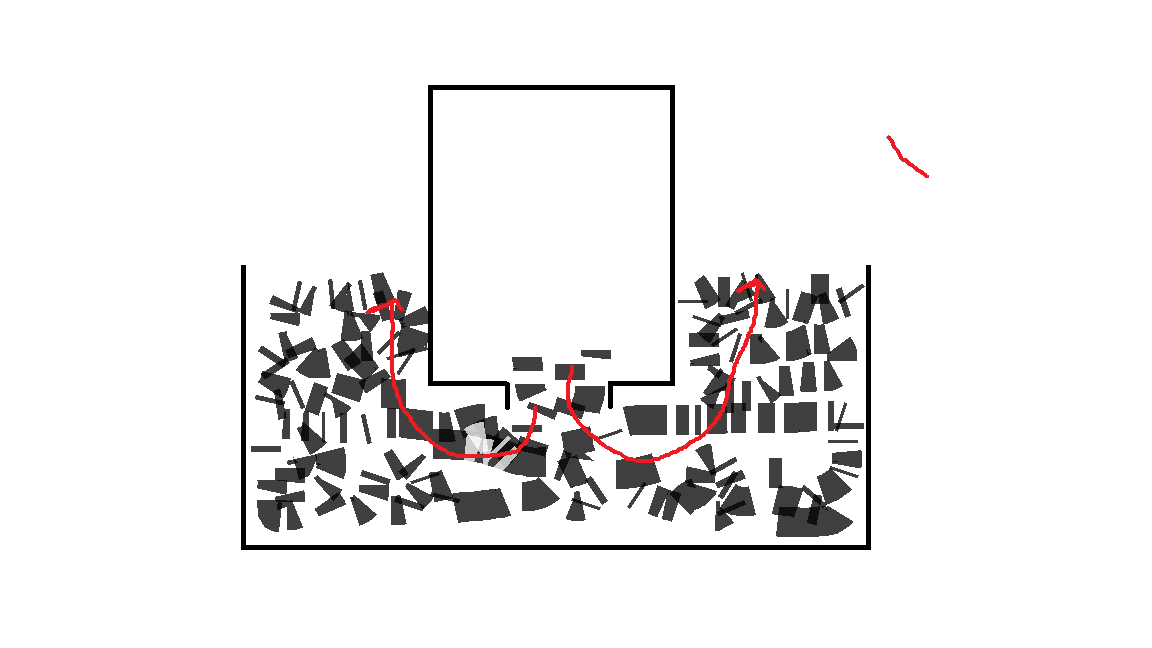I never thought of cast iron planter plates as a source for grates:
https://smithauctions.hibid.com/lot/31463607/-8--cast-iron-planter-plates/?cpage=3&ref=catalog
Actually, I never saw planter plates that looked like these.
Those are cool!!! plus more!!! lol
If cast iron is a good option, I like floor drain covers. I’ve had to remove these by the dozen in parking ramps to clean the drains.
They can be purchased in different diameters.
Here’s an 8" grate
call that a genius finding…
After seeing what happened to the grate I made for the evaporator, I decided to buy cast iron grates. The big one is 10" and the small one is an 8". The openings taper from ¾" to ½" on the big one and the small one tapers from 5/16" to 7/16".
I can’t even tell you how many of these I had to break to gain access to drains in the 23 years I worked as a drain cleaner.
Both of these are cast iron. I will edit prices in later.
Hi,Bill!
1.5.2017
At glowing temperatures, the radiating heat treansfere is ~4 – 6 times greater than direct contact transfere!
Why not taking this fundamental thing into account?
A flat surface in direct contact with glowing char, is there any better way of destruction? Contact + radiation.
Regulating the ratio between receiving and releasing radiation is the only way to keep the metal within deacent temperatures and below destructive oxidation…
Using free and excellent insulation, always at hand, would be the most inexpensive way to get “long-life” grates, or am I wrong?
Ask Dustin…
Max,
good comment! This is exactly what l was thinking when designing my new gasifier. Go grateless. Use the amazeing insulation and radiation absorbance ability of charcoal, similar to what happens in a charcoal gasifier. It realy makes a big difference!
1.5.2017
Hi, Kristijan! Cheers!
Not for nothing! Good old George was called the “Pope”!
But here and now I had an easier to serve variant in mind:
Angle-iron (profile) for collecting a part of the ash and soot before flying to the cyclone… still not blow-through vertically, if arrangements allow.
As here probably is not any serious shortage of height…
In your case vertical angle-iron profiles could lessen clogging near the upper periphery. Profiles opening towards the center.
Thats one modification l might actualy do…
Hi, Kristijan!
1.5.2017
Cheers!
I’m sorry Max, none of this makes sense to me. I really don’t understand which direction you’re trying to point me to.
Hi, Bill!
1.5.2017
Heat usually, with glowing char and gas hits a grate from above.
Below the grate there usually is a bit cooler space and less radiation?
A grate radiates the received heat further downwards, and “tries” to “survive”.
If we have a fully exposed flat grate-bar surface upward against full glowing char, the heat “intake” is tremendous.
A poor grate-bar has difficulties to “get rid of” the overwhelming “heat-offering” from abowe by radiating it downward.
Now, if the upper and lower surfaces are about the same
the grate bar will “settle” for a mean temperature between the intensively glowing char and the ash temperature below.
Practice is teaching, that this temperature is too high for any long endurance for low grade materials.
…
I was saying, that adjusting the ratio between heat intake and delivery outward
from a grate bar will affect its mean temperature and lifetime!
…
When the upper face of of a grate-bar is mostly covered by ash, the heat-receiving ability is grately reduced.
This will “tilt” the ratio in/out favorably.
Using an angle-iron profile as grate bar will increase the outward (downward) radiating surface by 1.4 times compared to a flat surface.
The upward facing “ditch” will keep a steady layer of hardening ash for its protection against radiation.
Is it any clearear now, Bill?
Yes max, thanks for the clarification.
Can you explain “grateless”? Something needs to hold the charcoal.
Hi, Bill!
1.5.2017
As the title says: No grate!
From the restriction downwards you have, or you do not have a reduction tube (same diameter as restriction) with char out-flowing and filling the larger bucket, usually about 3 times the restriction in diameter, as an extension of the hearth-tube.
Outside this larger tube (without bottom) there is one more bucket (with bottom) taking the gases upwards outside the hearth.
This type is pictured in all good gas-books… in the library.
“Grateless” by volume, but…
17.5.2017
Full diameter grateless reduction has a wonderfull dynamic, as long it is not clogged by ash and slag.
Extending the “sweet” seems to be extendable.
First: Melting slag is a cause of temperature which has been documented long time ago, in the context with peat; the melting temperatures of ash in different fuels differ quite a bit.
Reducing the blasting velocity and the vertical loading at the nozzle-tip-circle easies off the overly high temperatures quite nicely… and moderate restriction.
That lessens the buildup of slag.
Still, ash will always appear. Actively sifting the char, at least at the periphery and bottom regions helps to prolong (extend) the useful draft.
Periodical (at bunkering) fast sifting may keep it going until next ash removal.
Post with drawn post with drawn.
Those cast iron drain graits look like perfect Graits.for inside my burn tube. Floating grait.
Post with drawn.post withdrawn
